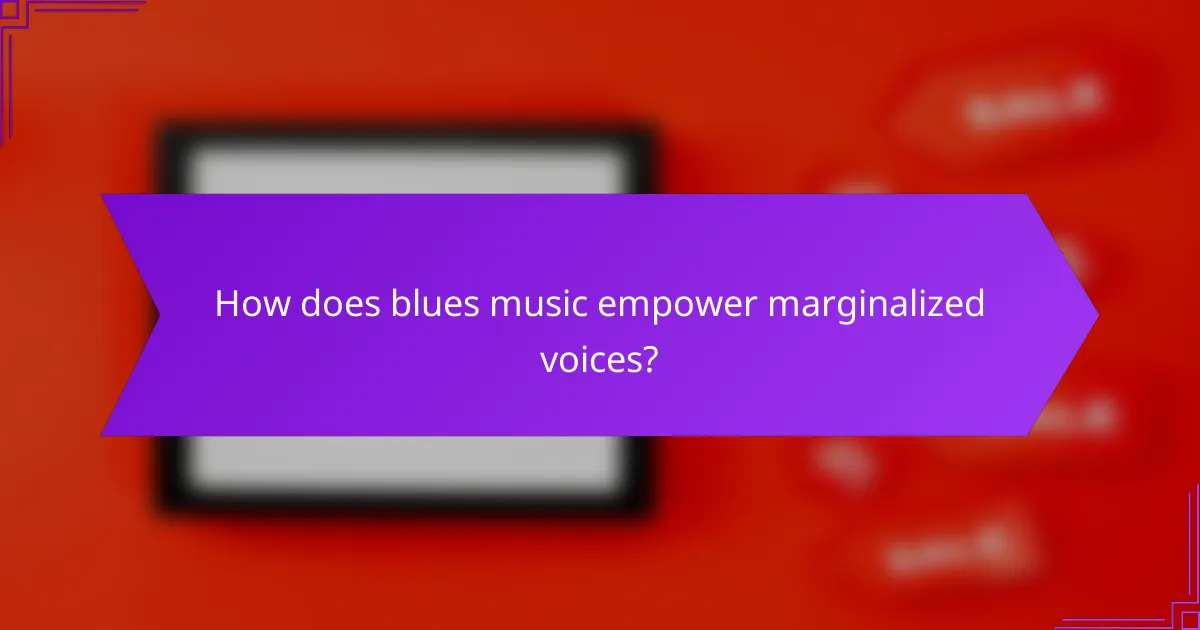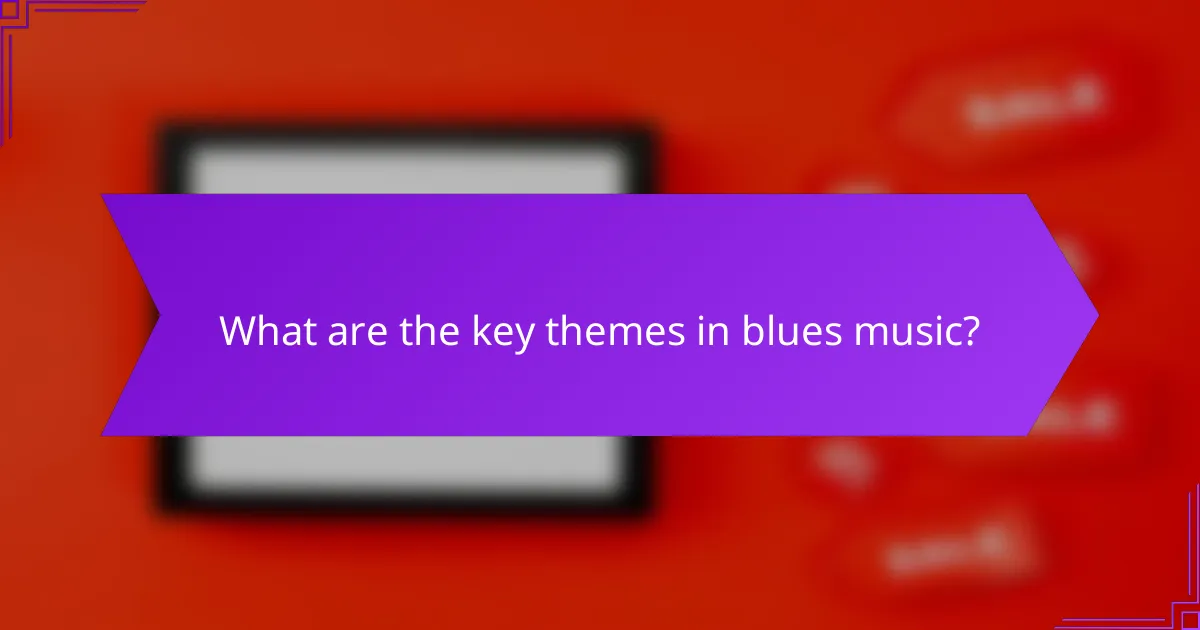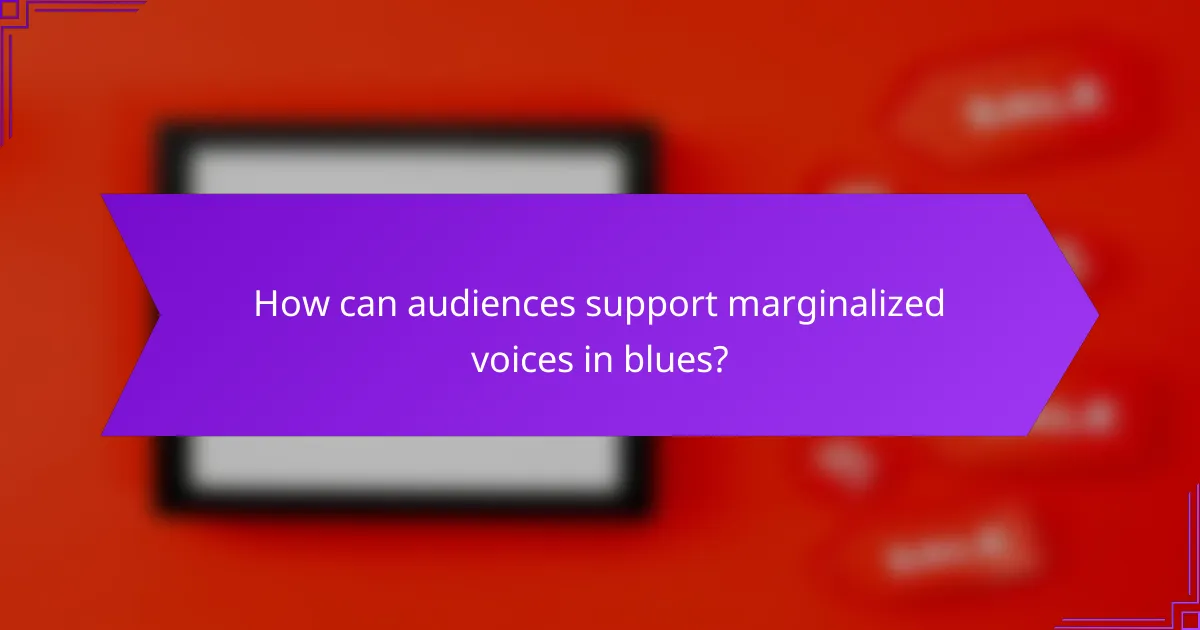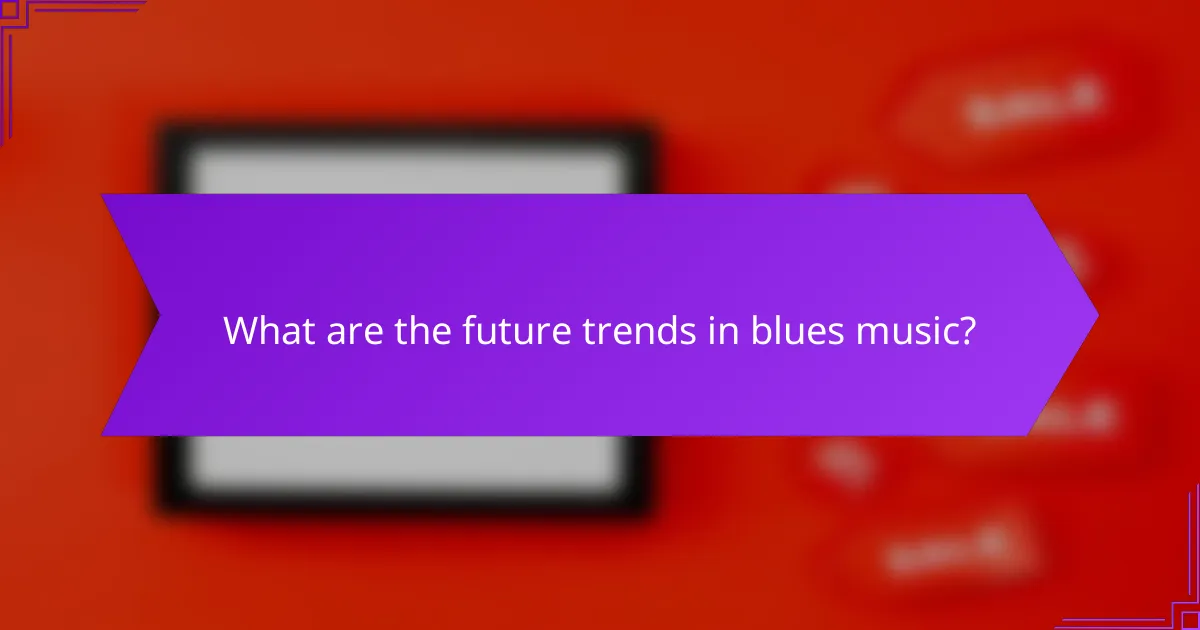Blues music serves as a powerful platform for marginalized voices, enabling artists to share their stories and experiences. Rooted in the struggles and resilience of communities, particularly African Americans, it explores themes of love, heartbreak, and social justice. By amplifying these narratives, blues promotes representation and fosters a deeper understanding of diverse lived experiences.

How does blues music empower marginalized voices?
Blues music empowers marginalized voices by providing a platform for expression and storytelling. It reflects the struggles and resilience of communities, particularly African Americans, allowing their experiences and emotions to be shared and understood.
Historical context of blues music
The origins of blues music trace back to the late 19th century in the Deep South of the United States, emerging from African American spirituals, work songs, and folk music. This genre developed as a response to the social and economic hardships faced by Black communities, including slavery and segregation.
Blues music served as a form of resistance, with artists using their songs to convey pain, hope, and the quest for freedom. Notable figures like B.B. King and Muddy Waters brought the genre to wider audiences, solidifying its role in American music history.
Impact on social movements
Blues music has played a significant role in various social movements, particularly during the Civil Rights Movement of the 1960s. Songs like “Strange Fruit,” performed by Billie Holiday, highlighted racial injustice and became anthems for change.
The genre continues to inspire activism today, with artists using their platforms to address issues such as inequality and police brutality. Blues music fosters solidarity and encourages listeners to engage with social justice causes.
Representation in modern blues
Modern blues music showcases a diverse range of artists, including women and people of color, who bring fresh perspectives to the genre. Musicians like Susan Tedeschi and Joe Bonamassa blend traditional blues with contemporary styles, expanding its reach and relevance.
Festivals and events now prioritize inclusivity, featuring a variety of voices that reflect the community’s diversity. This representation not only honors the genre’s roots but also ensures that marginalized voices continue to be heard and celebrated in the music industry.

What are the key themes in blues music?
Blues music often explores themes of struggle, resilience, love, heartbreak, and social justice. These themes reflect the lived experiences of marginalized communities, providing a voice for their challenges and triumphs.
Struggles and resilience
The theme of struggles and resilience is central to blues music, often illustrating the hardships faced by individuals, particularly in African American communities. Songs frequently recount personal and collective battles against poverty, discrimination, and life’s adversities.
For example, lyrics may depict the daily grind of working-class life or the emotional toll of systemic oppression. This theme resonates deeply, as it not only acknowledges pain but also celebrates the strength required to overcome it.
Love and heartbreak
Love and heartbreak are prevalent themes in blues music, capturing the complexities of romantic relationships. Many songs express deep emotions related to love lost, unrequited feelings, or the joy of love found.
These narratives often include vivid imagery and relatable situations, making them timeless. The raw emotion conveyed in blues ballads allows listeners to connect with their own experiences of love and loss.
Social justice and activism
Social justice and activism are significant themes in blues music, reflecting the genre’s roots in the struggles for civil rights and equality. Many artists use their music as a platform to address issues such as racism, inequality, and injustice.
For instance, songs may call for change or highlight the experiences of marginalized groups, encouraging listeners to reflect on societal issues. This activism through music not only raises awareness but also fosters a sense of community and solidarity among listeners.

How can blues music promote representation?
Blues music promotes representation by amplifying marginalized voices and showcasing their stories. Through its rich history and cultural significance, blues serves as a platform for artists from diverse backgrounds to express their experiences and connect with wider audiences.
Highlighting diverse artists
Blues music has a long tradition of featuring artists from various ethnic and cultural backgrounds, including African American, Hispanic, and Indigenous musicians. By spotlighting these diverse artists, the genre fosters a more inclusive music scene that reflects the richness of human experience.
Events like blues festivals often prioritize lineups that include a range of voices, ensuring that listeners are exposed to different styles and narratives. This approach not only enriches the genre but also encourages emerging artists from underrepresented communities to share their talents.
Collaborations with other genres
Collaborations between blues musicians and artists from other genres, such as rock, jazz, and hip-hop, can enhance representation by merging different cultural influences. These cross-genre partnerships often lead to innovative sounds that attract diverse audiences and highlight the versatility of blues music.
For instance, collaborations with hip-hop artists can introduce blues to younger generations, creating a bridge between traditional sounds and contemporary styles. This fusion not only broadens the appeal of blues but also emphasizes the interconnectedness of musical traditions.
Community outreach programs
Community outreach programs play a vital role in promoting representation within the blues genre. Initiatives that provide music education and resources to underserved communities help nurture the next generation of blues musicians. These programs often include workshops, mentorship opportunities, and performance spaces for aspiring artists.
By engaging with local schools and community centers, blues organizations can foster a sense of belonging and empowerment among young musicians. This grassroots approach ensures that the voices of diverse communities are heard and celebrated within the blues landscape.

What are the challenges faced by blues artists today?
Blues artists today encounter several challenges that hinder their ability to thrive in the music industry. These include commercialization pressures, limited access to platforms for marginalized voices, and the struggle to preserve the authentic sound of blues music.
Commercialization of blues
The commercialization of blues music often prioritizes marketability over authenticity, leading to a dilution of the genre’s roots. Artists may feel pressured to conform to mainstream trends, which can compromise their creative expression and the cultural significance of their work.
This trend can result in a cycle where only commercially viable artists receive attention, leaving many talented musicians without the opportunity to share their genuine sound. As a consequence, the rich history and emotional depth of blues music risk being overshadowed by superficial commercial interests.
Access to platforms for marginalized artists
Marginalized artists frequently face significant barriers in accessing platforms to showcase their music. Traditional music venues and radio stations often favor well-known or mainstream acts, making it difficult for lesser-known blues musicians to gain exposure.
Online platforms have opened new avenues, but algorithms may still favor established artists, limiting visibility for emerging talent. To combat this, artists can leverage social media and independent streaming services to build their audience and connect directly with fans.
Preservation of authentic sound
Preserving the authentic sound of blues is crucial for maintaining its cultural heritage. As new generations of artists emerge, there is a risk that the original elements of blues, such as its emotional storytelling and traditional instrumentation, may be lost or altered.
To ensure authenticity, artists should prioritize their roots and seek mentorship from seasoned musicians. Engaging in community events and collaborations can also help maintain the genre’s integrity while allowing for innovative expressions that respect its origins.

How can audiences support marginalized voices in blues?
Audiences can support marginalized voices in blues by actively engaging with artists and initiatives that promote diversity within the genre. This can be achieved through attending performances, promoting independent musicians, and participating in community-driven projects.
Attending live performances
Attending live performances is one of the most direct ways to support marginalized voices in blues. Look for shows featuring artists from underrepresented backgrounds, as these events often provide a platform for their unique stories and styles. Local venues frequently host these performances, making it accessible to many music lovers.
Consider attending open mic nights or community festivals that showcase diverse talent. These events not only highlight emerging artists but also foster a sense of community and cultural exchange.
Promoting independent artists
Promoting independent artists is crucial for amplifying marginalized voices in blues. Share their music on social media, write reviews, or create playlists that feature their work. This helps increase their visibility and can lead to more opportunities for these artists.
Support platforms like Bandcamp or SoundCloud, where many independent musicians distribute their music. Purchasing their albums or merchandise directly contributes to their livelihood and encourages them to continue creating.
Engaging with community initiatives
Engaging with community initiatives can significantly impact the representation of marginalized voices in blues. Look for local organizations that focus on music education, mentorship, or cultural preservation. These groups often provide resources and support to aspiring artists from diverse backgrounds.
Participate in workshops, volunteer for events, or donate to causes that empower underrepresented musicians. Your involvement can help create a more inclusive environment for blues music and ensure that these voices are heard and celebrated.

What are the future trends in blues music?
The future of blues music is poised for significant evolution, driven by technological advancements and a growing diversity among artists. As the genre continues to adapt, it embraces new production methods and amplifies marginalized voices, enhancing representation within the music industry.
Integration of technology in music production
Technology is reshaping blues music production, allowing artists to create and distribute their work more efficiently. Digital audio workstations (DAWs) and software plugins enable musicians to experiment with sounds and styles, leading to innovative compositions that blend traditional blues with modern genres.
Moreover, platforms like streaming services and social media provide artists with direct access to audiences, bypassing traditional gatekeepers. This democratization of music distribution means that emerging blues musicians can reach listeners globally without significant financial investment.
Emerging artists from diverse backgrounds
Blues music is increasingly showcasing artists from various cultural backgrounds, enriching the genre with fresh perspectives and sounds. Musicians of African, Latin, and Asian descent are bringing their unique influences into blues, creating a more inclusive and representative musical landscape.
These emerging artists often draw on their cultural heritage, blending traditional blues elements with their own musical styles. This fusion not only revitalizes the genre but also attracts a wider audience, making blues music relevant to new generations of listeners.



